U.S.-China Relations
The United States and China have one of the world’s most important and complex bilateral relationships. Since 1949, the countries have experienced periods of both tension and cooperation over issues including trade, climate change, and Taiwan.







People’s Republic of China Established
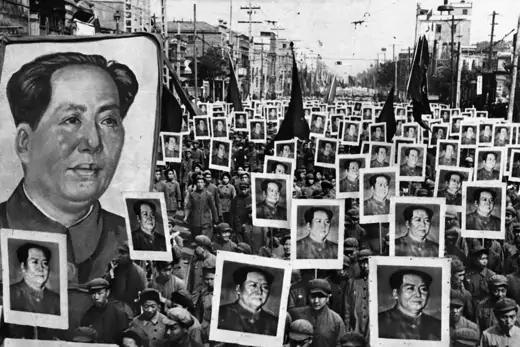
Chinese Communist Party leader Mao Zedong establishes the People’s Republic of China in Beijing on October 1 after peasant-backed Communists defeat the Nationalist government of Chiang Kai-shek. Chiang and thousands of his troops flee to Taiwan. The United States—which backed the Nationalists against invading Japanese forces during World War II—supports Chiang’s exiled Republic of China government in Taipei, setting the stage for several decades of limited U.S. relations with mainland China.
Korean War Breaks Out

The Soviet-backed North Korean People’s Army invades South Korea on June 25. The United Nations and the United States rush to South Korea’s defense. China, in support of the communist North, retaliates when U.S., UN, and South Korean troops approach the Chinese border. As many as four million people die in the three-year conflict until the United Nations, China, and North Korea sign an armistice agreement in 1953 [PDF].
First Taiwan Strait Crisis
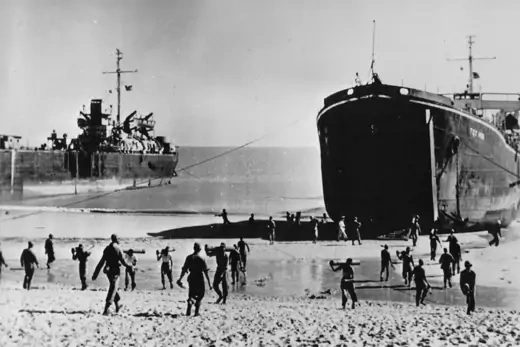
President Dwight Eisenhower lifts the U.S. navy blockade of Taiwan in 1953, leading Chiang Kai-shek to deploy thousands of troops to the Quemoy and Matsu islands in the Taiwan Strait in August 1954. Mainland China’s People’s Liberation Army responds by shelling the islands. Washington signs a mutual defense treaty with Chiang’s Nationalists. In the spring of 1955, the United States threatens a nuclear attack on China. That April, China agrees to negotiate, claiming a limited victory after the Nationalists' withdrawal from Dachen Island. Crises erupt again in 1956 and 1996.
Tibetan Uprising
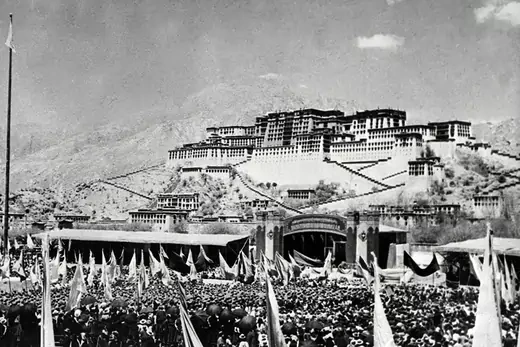
Nine years after the People’s Republic of China asserts control over Tibet, a widespread uprising occurs in Lhasa. Thousands die in the ensuing crackdown by PRC forces, and the Dalai Lama flees to India. The United States joins the United Nations in condemning Beijing for human rights abuses in Tibet, while the Central Intelligence Agency helps arm the Tibetan resistance beginning in the late 1950s.
China’s First Atomic Test

China joins the nuclear club in October 1964 when it conducts its first test of an atomic bomb. The test comes amid U.S.-Sino tensions over the escalating conflict in Vietnam. By the time of the test, China has amassed troops along its border with Vietnam.
Sino-Soviet Border Conflict

Differences over security, ideology, and development models strain Sino-Soviet relations. China’s radical industrialization policies, known as the Great Leap Forward, lead the Soviet Union to withdraw advisors in 1960. Disagreements culminate in border skirmishes in March 1969. Moscow replaces Washington as China’s biggest threat, and the Sino-Soviet split contributes to Beijing’s eventual rapprochement with the United States.
Ping-Pong Diplomacy

In the first public sign of warming relations between Washington and Beijing, China’s ping-pong team invites members of the U.S. team to China on April 6, 1971. Journalists accompanying the U.S. players are among the first Americans allowed to enter China since 1949. In July of 1971, Secretary of State Henry Kissinger makes a secret trip to China. Shortly thereafter, the United Nations recognizes the People’s Republic of China, endowing it with the permanent Security Council seat that had been held by Chiang Kai-shek’s Republic of China on Taiwan since 1945.
Nixon Visits China
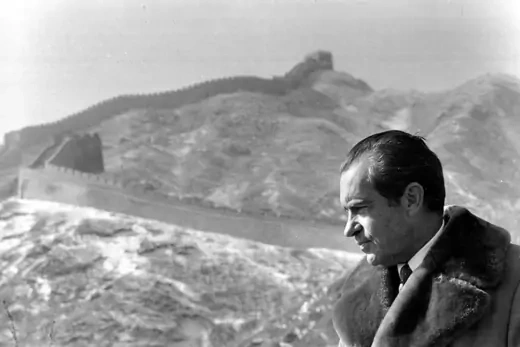
President Richard Nixon spends eight days in China in February 1972, during which he meets Chairman Mao and signs the Shanghai Communiqué with Premier Zhou Enlai. The communiqué sets the stage for improved U.S.-Sino relations by allowing China and the United States to discuss difficult issues, particularly Taiwan. However, normalization of relations between the two countries makes slow progress for much of the decade.
Formal Ties and One-China Policy
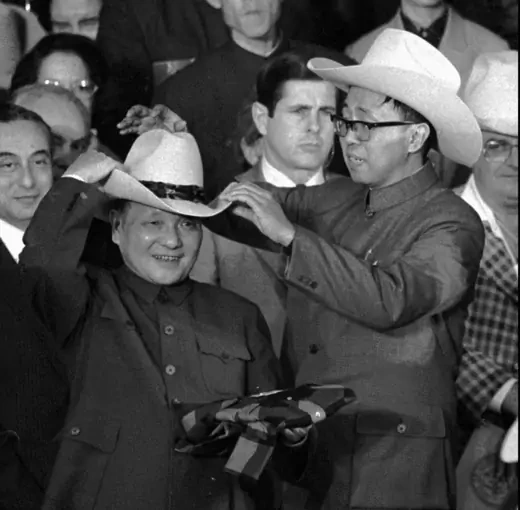
U.S. President Jimmy Carter grants China full diplomatic recognition, while acknowledging mainland China’s One-China principle and severing normal ties with Taiwan. Chinese Vice Premier Deng Xiaoping, who leads China through major economic reforms, visits the United States shortly thereafter. However, in April, Congress approves the Taiwan Relations Act, allowing continued commercial and cultural relations between the United States and Taiwan. The act requires Washington to provide Taipei with defensive arms, but does not officially violate the United States’ One-China policy.
China in the Reagan Era
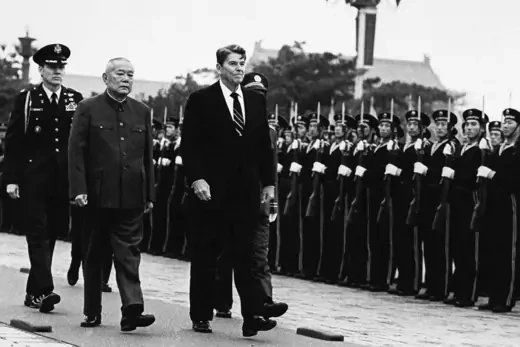
The Ronald Reagan administration issues the “Six Assurances” to Taiwan, including pledges that it will honor the Taiwan Relations Act, it would not mediate between Taiwan and China, and it had no set date to terminate arms sales to Taiwan. The Reagan administration then signs in August 1982 a third joint communiqué with the People’s Republic of China to normalize relations. It reaffirms the U.S. commitment to its One-China policy. Though President Reagan voices support for stronger ties with Taiwan during his presidential campaign, his administration works to improve Beijing-Washington relations at the height of U.S. concerns over Soviet expansionism. Reagan visits China in April 1984 and in June, the U.S. government permits Beijing to make purchases of U.S. military equipment.
Tiananmen Square Massacre
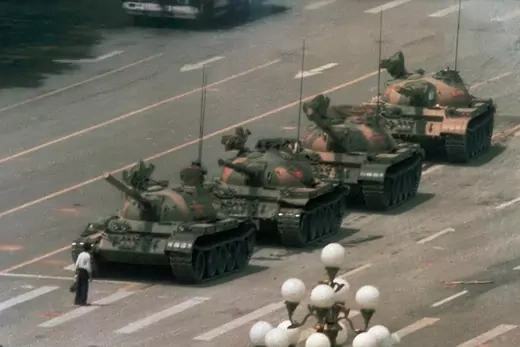
In the spring of 1989, thousands of students hold demonstrations in Beijing’s Tiananmen Square, demanding democratic reforms and an end to corruption. On June 3, the government sends in military troops to clear the square, leaving hundreds of protesters dead. In response, the U.S. government suspends military sales to Beijing and freezes relations.
Prominent Dissidents Deported

In September 1993, China releases Wei Jingsheng, a political prisoner since 1979. That year, President Bill Clinton launches a policy of “constructive engagement” with China. However, after Beijing loses its bid to host the 2000 Olympic Games, the Chinese government imprisons Wei again. Four years later, Clinton secures the release of Wei and Tiananmen Square protester Wang Dan. Beijing deports both dissidents to the United States.
Taiwan’s First Free Presidential Vote

The Nationalist Party’s Lee Teng-hui wins Taiwan’s first free presidential elections by a large margin in March 1996, despite Chinese missile tests meant to sway Taiwanese voters against voting for the pro-independence candidate. The elections come a year after China recalls its ambassador after President Clinton authorizes a visit by Lee, reversing a fifteen-year-old U.S. policy against granting visas to Taiwan’s leaders. In 1996, Washington and Beijing agree to exchange officials again.
Belgrade Embassy Bombing

The North Atlantic Treaty Organization (NATO) accidentally bombs the Chinese embassy in Belgrade during its campaign against Serbian forces occupying Kosovo in May 1999, shaking U.S.-Sino relations. The United States and NATO offer apologies for the series of U.S. intelligence mistakes that led to the deadly bombing, but thousands of Chinese demonstrators protest throughout the country, attacking official U.S. property.
Normalized Trade Relations
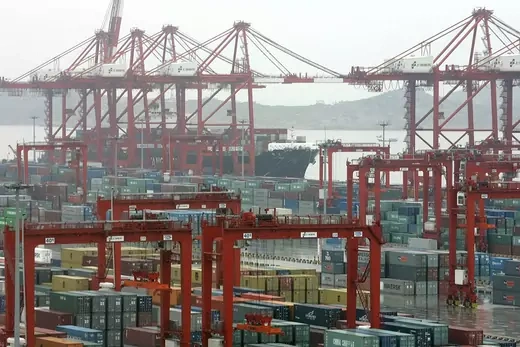
President Clinton signs the U.S.-China Relations Act of 2000 in October, granting Beijing permanent normal trade relations with the United States and paving the way for China to join the World Trade Organization in 2001. Between 1980 and 2004, U.S.-China trade rises from $5 billion to $231 billion. In 2006, China surpasses Mexico as the United States’ second-biggest trade partner, after Canada.
U.S.-Sino Spy Plane Standoff
In April 2001, a U.S. reconnaissance plane collides with a Chinese fighter and makes an emergency landing on Chinese territory. Authorities on China’s Hainan Island detain the twenty-four-member U.S. crew. After twelve days and a tense standoff, authorities release the crew, and President George W. Bush expresses regret over the death of a Chinese pilot and the landing of the U.S. plane.
‘Responsible Stakeholder’
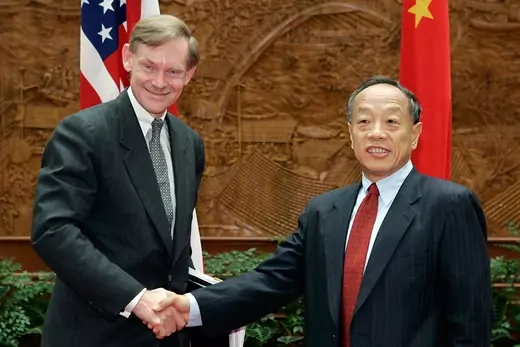
In a September 2005 speech, Deputy Secretary of State Robert B. Zoellick initiates a strategic dialogue with China. Recognizing Beijing as an emerging power, he calls on China to serve as a “responsible stakeholder” and use its influence to draw nations such as Sudan, North Korea, and Iran into the international system. That same year, North Korea walks away from Six-Party Talks aimed at curbing Pyongyang’s nuclear ambitions. After North Korea conducts its first nuclear test in October 2006, China serves as a mediator to bring Pyongyang back to the negotiating table.
China Increases Military Spending
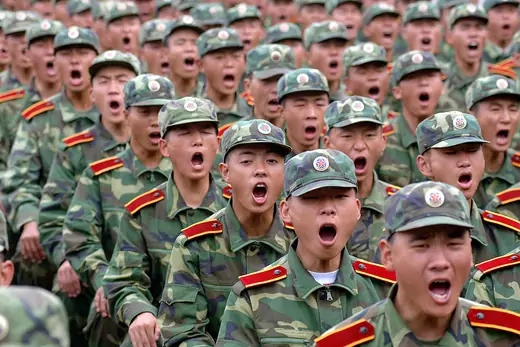
In March 2007, China announces an 18 percent budget increase in defense spending for 2007, totaling more than $45 billion. Increases in military expenditures average 15 percent a year from 1990 to 2005. During a 2007 tour of Asia, U.S. Vice President Dick Cheney says China’s military buildup is “not consistent” with the country’s stated goal of a “peaceful rise.” China says it is increasing spending to provide better training and higher salaries for its soldiers, to “protect national security and territorial integrity.”
China Becomes Largest U.S. Foreign Creditor
In September 2008, China surpasses Japan to become the largest holder of U.S. debt—or treasuries—at around $600 billion. The growing interdependence between the U.S. and Chinese economies becomes evident as a financial crisis threatens the global economy, fueling concerns over U.S.-China economic imbalances.
China Becomes World’s Second-Largest Economy

China surpasses Japan as the world’s second-largest economy after it is valued at $1.33 trillion for the second quarter of 2010, slightly above Japan’s $1.28 trillion for that year. China is on track to overtake the United States as the world’s number one economy by 2027, according to Goldman Sachs chief economist Jim O’Neill. At the start of 2011, China reports a total GDP of $5.88 trillion for 2010, compared to Japan’s $5.47 trillion.
U.S. ‘Pivots’ Toward Asia
In an essay for Foreign Policy, U.S. Secretary of State Hillary Clinton outlines a U.S. “pivot” to Asia. Clinton’s call for “increased investment—diplomatic, economic, strategic, and otherwise—in the Asia-Pacific region” is seen as a move to counter China’s growing clout. That month, at the Asia-Pacific Economic Cooperation summit, U.S. President Barack Obama announces the United States and eight other nations have reached an agreement on the Trans-Pacific Partnership—a multinational free trade agreement. Obama later announces plans to deploy 2,500 marines in Australia, prompting criticism from Beijing.
Rising Trade Tensions

The U.S. trade deficit with China rises from $273.1 billion in 2010 to an all-time high of $295.5 billion in 2011. The increase accounts for three-quarters of the growth in the U.S. trade deficit for 2011. In March, the United States, the EU, and Japan file a “request for consultations” with China at the World Trade Organization over its restrictions on exporting rare earth metals. The United States and its allies contend China’s quota violates international trade norms, forcing multinational firms that use the metals to relocate to China. China calls the move “rash and unfair,” while vowing to defend its rights in trade disputes.
Dissident Flees to U.S. Embassy
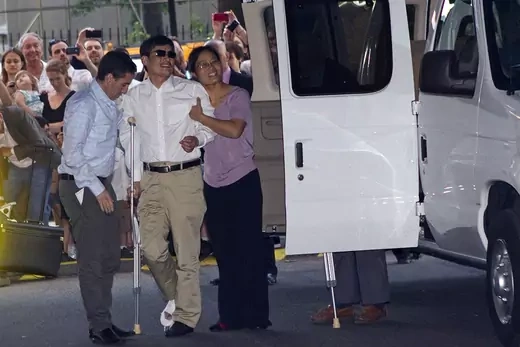
Blind Chinese dissident Chen Guangcheng escapes house arrest in Shandong province on April 22 and flees to the U.S. embassy in Beijing. U.S. diplomats negotiate an agreement with Chinese officials allowing Chen to stay in China and study law in a city close to the capital. However, after Chen moves to Beijing, he changes his mind and asks to take shelter in the United States. The development threatens to undermine U.S.-China diplomatic ties, but both sides avert a crisis by allowing Chen to visit the United States as a student, rather than as an asylum seeker.
China’s New Leadership

The 18th National Party Congress concludes with the most significant leadership turnover in decades as about 70 percent of the members of the country’s major leadership bodies—the Politburo Standing Committee, the Central Military Commission, and the State Council—are replaced. Li Keqiang assumes the role of premier, while Xi Jinping replaces Hu Jintao as president, Communist Party general secretary, and chairman of the Central Military Commission. Xi delivers a series of speeches on the “rejuvenation” of China.
Sunnylands Summit

President Obama hosts President Xi for a “shirt-sleeves summit” at the Sunnylands Estate in California in a bid to build a personal rapport with his counterpart and ease tense U.S.-China relations. The leaders pledge to cooperate more effectively on pressing bilateral, regional, and global issues, including climate change and North Korea. Obama and Xi also vow to establish a “new model” of relations, a nod to Xi’s concept of establishing a “new type of great power relations” for the United States and China.
U.S. Indicts Chinese Nationals
A U.S. court indicts five Chinese hackers, allegedly with ties to China’s People’s Liberation Army, on charges of stealing trade technology from U.S. companies. In response, Beijing suspends its cooperation in the U.S.-China cybersecurity working group. In June 2015, U.S. authorities signal that there is evidence that Chinese hackers are behind the major online breach of the Office of Personnel Management and the theft of data from twenty-two million current and former federal employees.
Joint Climate Announcement

On the sidelines of the 2014 Asia-Pacific Economic Cooperation summit, President Obama and President Xi issue a joint statement on climate change, pledging to reduce carbon emissions. Obama sets a more ambitious target for U.S. emissions cutbacks, and Xi makes China’s first promise to curb carbon emissions’ growth by 2030. These commitments by the world’s top polluters stirred hopes among some experts that they would boost momentum for global negotiations ahead of the 2015 UN-led Climate Change Conference in Paris.
U.S. Warns China Over South China Sea

At the fourteenth annual Shangri-La Dialogue on Asian security, U.S. Secretary of Defense Ashton Carter calls on China to halt its controversial land reclamation efforts in the South China Sea, saying that the United States opposes “any further militarization” of the disputed territory. Ahead of the conference, U.S. officials say that images from U.S. naval surveillance provide evidence that China is placing military equipment on a chain of artificial islands, despite Beijing's claims that construction is mainly for civilian purposes.
Trump Affirms One-China Policy After Raising Doubts
U.S. President Donald Trump says he will honor the One-China policy in a call with President Xi. After winning the presidential election, Trump breaks with established practice by speaking on the telephone with Taiwanese President Tsai Ing-wen and questioning the U.S. commitment to its One-China policy. Washington’s policy for four decades has recognized that there is but one China. Under this policy, the United States has maintained formal ties with the People’s Republic of China but also maintains unofficial ties with Taiwan, including the provision of defense aid. Secretary of State Rex Tillerson, visiting Beijing in March, describes the U.S.-China relationship as one “built on nonconfrontation, no conflict, mutual respect, and always searching for win-win solutions.”
Trump Hosts Xi at Mar-a-Lago
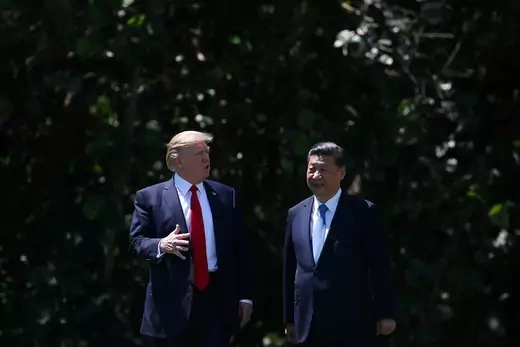
President Trump welcomes China’s Xi for a two-day summit at the Mar-a-Lago estate in Florida, where bilateral trade and North Korea top the agenda. Afterward, Trump touts “tremendous progress” in the U.S.-China relationship and Xi cites a deepened understanding and greater trust building. In mid-May, U.S. Commerce Secretary Wilbur Ross unveils a ten-part agreement between Beijing and Washington to expand trade of products and services such as beef, poultry, and electronic payments. Ross describes the bilateral relationship as “hitting a new high,” though the countries do not address more contentious trade issues including aluminum, car parts, and steel.
Trump Tariffs Target China

The Trump administration announces sweeping tariffs on Chinese imports, worth at least $50 billion, in response to what the White House alleges is Chinese theft of U.S. technology and intellectual property. Coming on the heels of tariffs on steel and aluminum imports, the measures target goods including clothing, shoes, and electronics and restrict some Chinese investment in the United States. China imposes retaliatory measures in early April on a range of U.S. products, stoking concerns of a trade war between the world’s largest economies. The move marks a hardening of President Trump’s approach to China after high-profile summits with President Xi in April and November 2017.
U.S.-China Trade War Escalates
The Trump administration imposes fresh tariffs totaling $34 billion worth of Chinese goods. More than eight hundred Chinese products in the industrial and transport sectors, as well as goods such as televisions and medical devices, will face a 25 percent import tax. China retaliates with its own tariffs on more than five hundred U.S. products. The reprisal, also valued around $34 billion, targets commodities such as beef, dairy, seafood, and soybeans. President Trump and members of his administration believe that China is “ripping off” the United States, taking advantage of free trade rules to the detriment of U.S. firms operating in China. Beijing criticizes the Trump administration’s moves as “trade bullying” and cautions that tariffs could trigger global market unrest.
Pence Speech Signals Hard-Line Approach
U.S. Vice President Mike Pence delivers a speech marking the clearest articulation yet of the Trump administration’s policy toward China and a significant hardening of the United States’ position. Pence says the United States will prioritize competition over cooperation by using tariffs to combat “economic aggression.” He also condemns what he calls growing Chinese military aggression, especially in the South China Sea, criticizes increased censorship and religious persecution by the Chinese government, and accuses China of stealing American intellectual property and interfering in U.S. elections. China’s Ministry of Foreign Affairs denounces Pence’s speech as “groundless accusations” and warns that such actions could harm U.S.-China ties.
Canada Arrests Huawei Executive
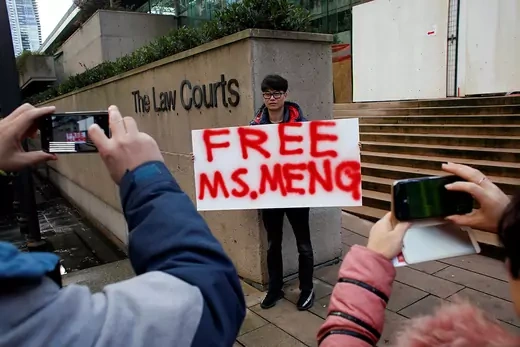
Meng Wanzhou, the chief financial officer of Chinese telecom and electronics company Huawei, is arrested in Canada at the United States’ request. The U.S. Justice Department alleges Huawei and Meng violated trade sanctions against Iran and committed fraud and requests her extradition. In apparent retaliation, China detains two Canadian citizens, who officials accuse of undermining China’s national security. Calling Meng’s arrest a “serious political incident,” Chinese officials demand her immediate release. In September 2021, Meng reaches a deal with U.S. prosecutors and is allowed to return to China. The Chinese government also releases the two Canadians.
Huawei Sues the United States

Amid legal proceedings against Meng, Huawei sues the United States in a separate lawsuit for banning U.S. federal agencies from using the telecom giant’s equipment. In a battle with Beijing for technological supremacy, the Trump administration launches an aggressive campaign warning other countries not to use Huawei equipment to build 5G networks, claiming the Chinese government could use the company to spy.
Trade War Intensifies

After trade talks break down, the Trump administration raises tariffs from 10 to 25 percent on $200 billion worth of Chinese goods. China retaliates by announcing plans to increase tariffs on $60 billion worth of American goods. President Trump says he believes the high costs imposed by tariffs will force China to make a deal favorable to the United States, while China’s Foreign Ministry says the United States has “extravagant expectations.” Days later, the Trump administration bans U.S. companies from using foreign-made telecommunications equipment that could threaten national security, a move believed to target Huawei. The U.S. Commerce Department also adds Huawei to its foreign entity blacklist.
U.S. Labels China a Currency Manipulator
After China’s central bank lets the yuan weaken significantly, the Trump administration designates China a currency manipulator. The designation, applied to China for the first time since 1994, is mainly symbolic, but it comes less than a week after Trump announced higher tariffs on $300 billion worth of goods. That means everything the United States imports from China now faces taxes. Beijing warns that the designation will “trigger financial market turmoil.”
Trump Signs Bill Supporting Hong Kong Protesters

President Trump signs the Hong Kong Human Rights and Democracy Act after it passes in the U.S. Congress with overwhelming majorities. The legislation authorizes the United States to sanction individuals responsible for human rights abuses in Hong Kong. It also requires U.S. officials to evaluate every year whether Hong Kong enjoys a “high degree of autonomy” from Beijing. Many of the pro-democracy protesters, who have been demonstrating since June, celebrate the bill’s passage. Chinese officials condemn the move, impose sanctions on several U.S.-based organizations, and suspend U.S. warship visits to Hong Kong.
‘Phase One’ Trade Deal Signed

President Trump and Chinese Vice Premier Liu He sign the agreement [PDF], a breakthrough in the nearly two-year trade war between the world’s two largest economies. The deal relaxes some U.S. tariffs on Chinese imports and commits China to buying an additional $200 billion worth of American goods, including agricultural products and cars, over two years. China also pledges to enforce intellectual property protections. But the agreement maintains most tariffs and does not mention the Chinese government’s extensive subsidies, a longtime concern of the United States, though Trump says these could be tackled in a future deal. Days before the signing, the United States dropped its designation of China as a currency manipulator.
Tensions Soar Amid COVID-19 Pandemic
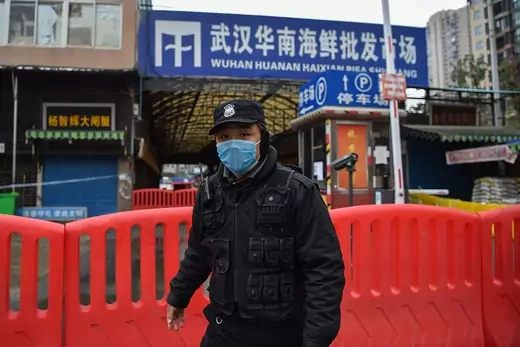
The Trump administration bars all non-U.S. citizens who recently visited mainland China from entering the United States amid an outbreak of a new coronavirus that was first reported in the Chinese city of Wuhan. By March, the World Health Organization (WHO) designates the outbreak a pandemic, after it spreads to more than one hundred countries. Leading officials in both China and the United States blame the other side for the pandemic. A Chinese Foreign Ministry spokesperson claims without evidence that the U.S. military brought the virus to China, while President Trump makes repeated references to the “Chinese virus,” which he says spread because of failures by the Chinese government. In April, top officials in both countries change their tones by highlighting areas for cooperation amid the crisis. Still, Trump faults the WHO for being biased toward China and halts U.S. funding to the organization.
China Expels American Journalists
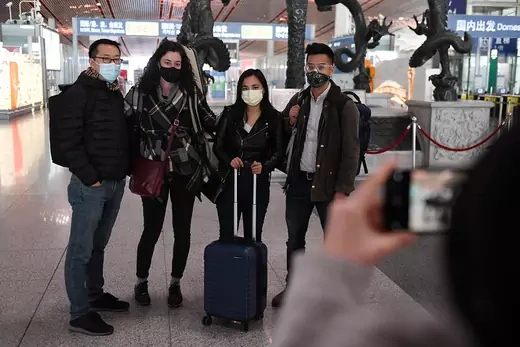
The Chinese government expels at least thirteen journalists from three U.S. newspapers—the New York Times, Wall Street Journal, and Washington Post—whose press credentials are set to expire in 2020. Beijing also demands that those outlets, as well as TIME and Voice of America, share information with the government about their operations in China. The Chinese Foreign Ministry says the moves are in response to the U.S. government’s decision earlier in the year to limit the number of Chinese journalists from five state-run media outlets in the United States to 100, down from 160, and designate those outlets as foreign missions. In November 2021, Washington and Beijing agree to ease restrictions on journalists working in each other’s countries.
Trump Ends Hong Kong’s Special Status
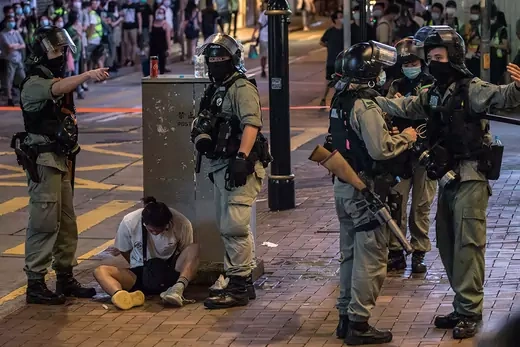
Two weeks after Beijing passes a new national security law for Hong Kong, President Trump signs an executive order ending the city’s preferential trade status with the United States. He also signs legislation to sanction officials and businesses that undermine Hong Kong’s freedoms and autonomy. Chinese officials threaten to impose retaliatory sanctions on U.S. individuals and entities. They denounce what they call U.S. interference in China’s internal affairs, including Washington’s announcement a day earlier declaring most of Beijing’s claims in the South China Sea illegal.
U.S., China Close Consulates in Diplomatic Escalation

The United States orders China to close its consulate in Houston, Texas, alleging that it was a hub of espionage and intellectual property theft. China condemns the order and retaliates by closing the U.S. consulate in Chengdu. In the same week, Washington indicts two Chinese hackers for allegedly stealing coronavirus vaccine research and sanctions eleven Chinese companies for their reported role in human rights abuses in Xinjiang. Meanwhile, Chinese Foreign Minister Wang Yi blames the United States for tensions.
Pompeo Says Engagement With China Has Failed
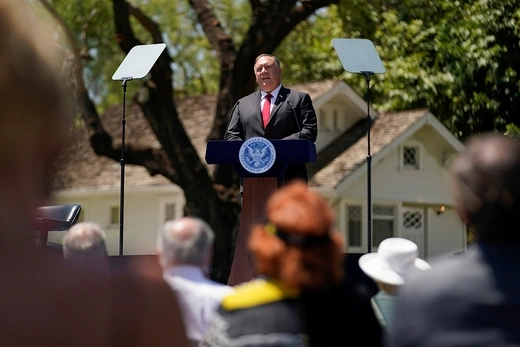
U.S. Secretary of State Mike Pompeo delivers a speech, titled “Communist China and the Free World’s Future,” signaling a profound shift in U.S. policy. He declares that the era of engagement with the Chinese Communist Party is over, condemning its unfair trade practices, intellectual property theft, human rights abuses in Xinjiang and Hong Kong, and aggressive moves in the East and South China Seas. He calls on Chinese citizens and democracies worldwide to press Beijing to change its behavior and respect the rules-based international order.
Trump Ramps Up Pressure as Transition Looms
President Trump attempts to cement his legacy of being tough on China during his final weeks in office. Director of National Intelligence John Ratcliffe calls China “the greatest threat to America today,” while the Commerce Department adds dozens of Chinese companies, including the country’s biggest chipmaker, Semiconductor Manufacturing International Corporation (SMIC), to its trade blacklist. The State Department tightens visa rules for the around ninety million members of the Chinese Communist Party. It also sanctions more Chinese officials, including fourteen members of China’s legislative body, over abuses in Hong Kong, Xinjiang, and elsewhere. Additionally, the White House bans U.S. investments in Chinese companies it says have ties to the People’s Liberation Army. Chinese officials vow retaliation against these and other actions the Trump administration takes.
U.S. Designates China’s Abuses of Uyghurs as Genocide

On Trump’s last day in office, Pompeo declares that China is committing crimes against humanity and genocide against Uyghurs, a Muslim ethnic group primarily from China’s Xinjiang region. The United States is the first country to apply those terms to abuses the Chinese government has committed over the past few years. The Chinese government denies genocide is taking place. The Joe Biden administration affirms Pompeo’s declaration; by the end of the year, it bans all imports from Xinjiang.
Biden Maintains Trump Tariffs, Other Tough Measures
The first in-person meeting between top Biden administration officials and Chinese officials, in Anchorage, Alaska, reflects deep disagreements between the two sides and ends without a joint statement. In the months after the meeting, the Biden administration continues some Trump administration policies, although it places more emphasis on coordinating its actions with allies. It maintains tariffs on Chinese imports, sanctions Chinese officials over policies in Hong Kong and Xinjiang, blacklists dozens of Chinese companies, and expands a Trump-era ban on American investment in Chinese firms with ties to the military. In his first speech to Congress, in April, President Biden stresses the importance of boosting investment in U.S. infrastructure and technology to compete with China.
At U.S. Urging, NATO Declares China a ‘Security Challenge’

NATO, which has focused on deterring Russian aggression and terrorism in recent years, releases a communiqué expanding the alliance’s focus to include threats from China, such as its nuclear weapons development and military modernization. “China’s stated ambitions and assertive behavior present systemic challenges to the rules-based international order and to areas relevant to alliance security,” the statement says. It is the first time that a NATO communiqué references threats from China. The declaration comes as the Biden administration pushes its allies to collectively respond to China.
Collaboration on Climate Change Amid Tensions
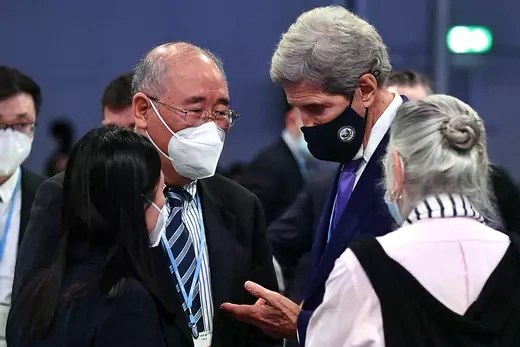
The United States and China, the world’s top emitters of greenhouse gases, sign a joint statement during the UN climate summit in Glasgow. They agree to boost cooperation on combating climate change over the next decade and work together on increasing the use of renewable energy, developing regulatory frameworks, and deploying technologies such as carbon capture. U.S. and Chinese officials applaud the agreement, with Chinese climate envoy Xie Zhenhua saying, “There is more agreement between the United States and China than divergence.”
Biden, Xi Discuss ‘Guardrails’ to Avoid Conflict
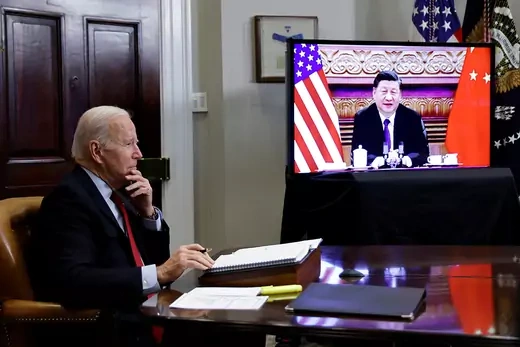
The leaders’ first formal meeting since Biden took office is held virtually and lasts more than three hours. Similar to the meeting in Alaska, the leaders voice issues of long-standing disagreement, with Biden raising concerns about Beijing’s human rights abuses and Xi saying that U.S. support for Taiwan is like “playing with fire.” There are no major breakthroughs nor a concluding joint statement, though Biden says they establish “guardrails” to avoid conflict, and experts say it is a positive step that the meeting even takes place.
U.S. Imposes Diplomatic Boycott on Beijing Olympics
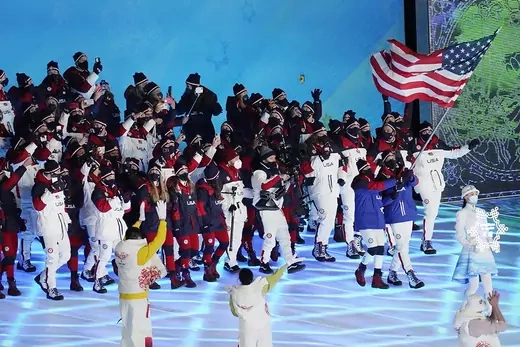
The United States imposes a diplomatic boycott of the Winter Olympics in Beijing, citing the Chinese government’s human rights abuses in Xinjiang and elsewhere. A handful of other countries, including Australia, Canada, and the United Kingdom, also refuse to send officials to the games. Chinese officials say the United States is trying to “politicize sports, create divisions and provoke confrontation.” No athletes publicly protest during the Olympics, though several skip the opening ceremony and speak out against China’s abuses after the games.
Biden Presses Xi on Russia’s War in Ukraine
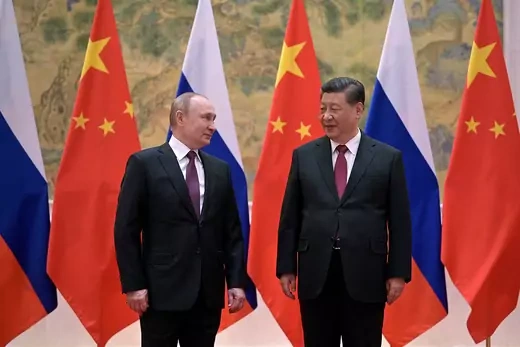
Days after U.S. officials say Russia asked China for military assistance, Biden holds a video call with Xi and threatens “consequences” if China provides material support. The call comes weeks after Russia invades Ukraine; during that time, China refuses to condemn Russian President Vladimir Putin for the war and the resulting humanitarian crisis. Chinese diplomats and state media outlets also repeat a Russian conspiracy theory that the United States is financing biological weapons labs in Ukraine. During the call, Biden lays out sanctions and other efforts that are coordinated with allies to punish Russia. Xi criticizes the sanctions, saying they “would only make people suffer.” Both leaders express support for peace talks.
Biden’s China Strategy a Call to Revive U.S. Competitiveness
In a long-awaited speech, Secretary of State Antony Blinken emphasizes the importance of bolstering U.S. competitiveness toward China. He calls China the “most serious long-term challenge to the international order” and contrasts the country’s authoritarianism with U.S. commitments to advancing democracy and human rights, but he also says Washington is determined to avoid conflict. The three pillars of the Biden administration’s strategy are investing in domestic industry, technology, and infrastructure; aligning with allies and partners to oppose China’s increasing aggression; and competing with China globally. The Chinese Foreign Ministry denounces Blinken’s speech as “disinformation,” countering that China is a “guardian of the international order.”
Tensions Flare Over Pelosi’s Visit to Taiwan
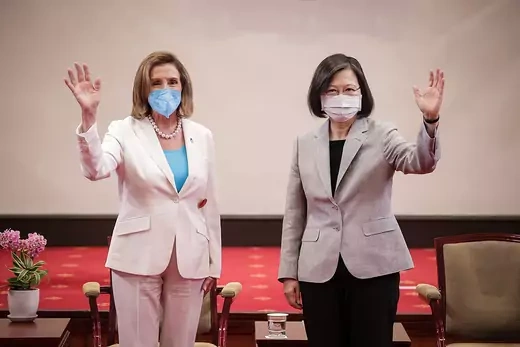
After months of Chinese officials warning the United States against boosting ties with Taiwan, U.S. House Speaker Nancy Pelosi visits Taipei in a trip she says is to demonstrate U.S. support for the island. The trip leads Beijing to suspend U.S.-China climate talks, cut off some high-level military communication channels, and sanction Pelosi. The Chinese military conducts live-fire drills that effectively encircle the island and are much bigger than exercises conducted during the last Taiwan Strait Crisis in 1996. It also launches ballistic missiles over the island, some of which land in Japan’s exclusive economic zone, and Chinese aircraft cross the median line between mainland China and Taiwan. The Group of Seven (G7) objects to China’s “aggressive military activity,” saying it risks destabilizing the region. The Chinese Foreign Ministry blames the United States for the tensions, while Taiwanese President Tsai says China’s response has undermined the status quo.
U.S. Restrictions Shock China’s Chip Industry

The U.S. Commerce Department places sweeping restrictions [PDF] on exports of U.S.-made advanced computing chips and related equipment to China. Commerce officials say China is using these items to “produce advanced military systems” and “commit human rights abuses.” U.S. companies and individuals who want to support China’s chip development now require approval from the U.S. government to do so. The restrictions also apply to foreign companies that use any U.S.-made tools and software. Experts expect the move to hobble China’s domestic chip industry, which has received a surge of government funding in recent years but still lacks the ability to manufacture the most advanced chips. A Chinese Foreign Ministry spokesperson says the United States “will only hurt and isolate itself” with the restrictions.
Biden, Xi Seek to Repair the Relationship

In Indonesia, Biden and Xi meet in person for the first time during Biden’s presidency. Both leaders express a desire to ease bilateral tensions and agree to reopen communication channels, including climate talks that were suspended months earlier. Biden says the United States will “compete vigorously” with China, but that he’s “not looking for conflict.” Xi says the countries need to “explore the right way to get along,” according to a Chinese foreign ministry readout. Over the three-hour meeting, the leaders also discuss Russia’s war in Ukraine. According to the U.S. readout, the leaders expressed opposition to the use of nuclear weapons in Ukraine, while the Chinese readout does not mention nuclear weapons. Biden raises concerns about rights abuses in Xinjiang and Chinese aggression against Taiwan, emphasizing that U.S. policy toward the island has not changed.
U.S. Shoots Down Suspected Chinese Spy Balloon

President Biden orders the U.S. Air Force to shoot down a Chinese-operated balloon off the southeastern U.S. coast after security officials say it was spying on sensitive military sites. China calls the balloon a civilian weather-monitoring craft that accidentally veered into U.S. air space. China’s foreign ministry condemns the downing as “a serious violation of international practice” and vows retaliation. The incident causes the Biden administration to cancel a trip by U.S. Secretary of State Antony Blinken to Beijing, raising fresh concerns over a worsening of U.S.-China relations already strained by U.S. support for Taiwan and trade frictions.
Biden and Xi Hold Talks Following APEC Summit

The two leaders meet in San Francisco, marking their first engagement in a year. Biden and Xi discuss topics including Taiwan, the South China Sea, and the wars in Ukraine and the Middle East. The leaders commit to resuming a bilateral working group to combat illicit drug manufacturing and restarting high-level military-to-military communication, and agree to establish a working group to discuss the risks of artificial intelligence. Xi also suggests in the meeting that Beijing would send new pandas to Washington as a sign of friendship, after their departure in October 2023. The summit aims to demonstrate some repairing of ties between the two countries—ultimately meeting low expectations.
High-Level Bilateral Meetings Signal Improved Contacts Amid Strains

Biden and Xi share a phone call on April 2 to reiterate their agenda from the November summit as well as their continuing efforts to address climate change and people-to-people exchanges. Meanwhile, U.S. Treasury Secretary Janet Yellen leads an economic delegation to China, and U.S. Defense Secretary Lloyd Austin resumes dialogue with China’s Minister of National Defense, Admiral Dong Jun, for the first time since November 2022. On April 26, Blinken travels to Shanghai and Beijing to meet with top Chinese officials, including Xi. Blinken warns China against supporting Russia’s war in Ukraine, and discusses issues including North Korea’s nuclear missile programs and the Israel-Hamas war. Less than a month later, Biden imposes new U.S. tariffs on Chinese electronic vehicles and other green products.
Trump’s ‘Liberation Day’ Tariffs Ramp Up Trade War

Just two months into his second administration, President Trump reescalates the trade war he began with China during his first term. After a series of tariff exchanges, Trump announces in April the most sweeping tariff hike on all U.S. trade partners since the 1930 Smoot-Hawley Tariff Act, a law known for exacerbating the Great Depression. After global markets take a plunge, Trump issues a ninety-day pause on all countries except China, which triggers another cascade of tariff retaliations from both countries. As of April 11, U.S. tariffs on all Chinese goods stand at 145 percent while Chinese tariffs on all U.S. goods are 125 percent, in addition to a 15 percent tariff on U.S. energy, a 10 percent tariff on crude oil and agricultural machinery, and a 10–15 percent tariff on U.S. agricultural products.